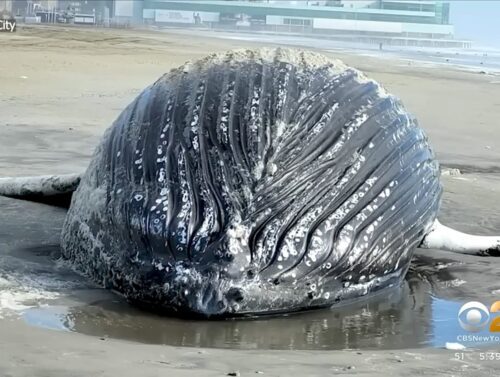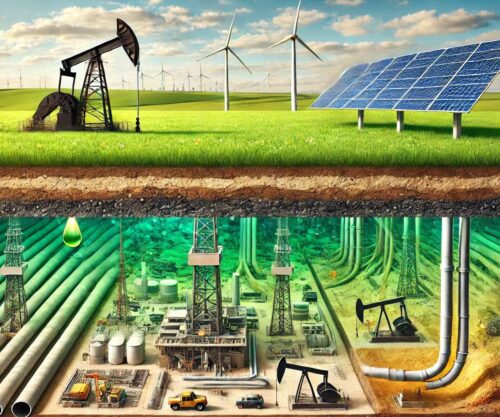
The Department of Energy’s Critical Review of Impacts of GHG Emissions on the U.S. Climate landed with a simple message most readers can understand. When you look for long-term changes in U.S. extremes, the signals are weak or absent. [some emphasis, links added]
My own take on extremes, costs, and sea level is similar—and I have walked through the evidence many times, including: The Sea Level Story You Are Not Being Told, The Hurricane Hoax: What the IPCC Doesn’t Want You to Know, The Myth of Increasing Disasters, and The Myth of Ever-Escalating Climate Costs in the USA.
A group of academics released a rebuttal, Climate Experts’ Review of the DOE CWG Report [archive here]. This isn’t surprising… these are the same scientists who have long peddled the myth that CO2 is a “pollutant” akin to toxic waste, ignoring its essential role in life on Earth.
Now, with their funding streams (often tied to grants that reward climate hysteria, including influences from agendas sponsored largely by entities like China, which benefits from Western deindustrialization) under threat from honest scrutiny like the DOE report, they’re scrambling to save their asses.
Below, I show in their own words where that review undercuts itself, and where recent empirical papers flatly contradict their narrative.
What DOE Actually Says About Extremes
DOE’s summary on extremes is short and clear:
“Most types of extreme weather exhibit no statistically significant long-term trends over the available historical record… Extreme convective storms, hurricanes, tornadoes, floods and droughts exhibit considerable natural variability, but long-term increases are not detected.”
You can read that chapter yourself here: DOE Critical Review (PDF).
That conclusion aligns with the neutral record view I have presented for years (see my disaster trends explainer and the EM-DAT figure).

How The “Expert Review” Tries To Flip The Script
The review accuses DOE of using a bad method and cherry-picking:
“As detailed in the over 400 pages of our expert review, the DOE CWG Report exhibits pervasive problems with misrepresentation and selective citation of the scientific literature, cherry-picking of data, and faulty or absent statistics.”
It also claims DOE failed to do statistics on sea level acceleration and picked only a few gauges:
“The standard scientific approach for evaluating the presence of acceleration is through statistical analysis. The DOE CWG report, however, performs no statistical analysis to test for acceleration… [and] selectively shows graphs of linear fits to four selected U.S. tide gauges.”
But just pages later, the review leans on a rhetorical maneuver that weakens its own case:
“The absence of statistically significant trends in the historical records does not mean that changes are not occurring.”
That sentence concedes the core point: when the data are not significant, you do not have a detected trend. It is fine to speculate that changes might exist below detection, but that is not the same as evidence.
Sea Level: Where The Review’s Claims Are Weakest
The review claims DOE’s statement that there is no “obvious acceleration” is wrong and points to agency dashboards that smooth and splice different data products.
What it does not grapple with is the new tide-gauge study below, which finds statistically significant acceleration in only a small minority of long records and emphasizes strong local causes.
Climate change will make oceans rise 3 – 10 feet by the end of this century, said scientists and the media. Nonsense. A new, first-ever global study of real world data, not models, finds no evidence climate change accelerated sea level rise. This is a massive scientific scandal. pic.twitter.com/1hd1Hug5kF
— Michael Shellenberger (@shellenberger) September 2, 2025
If you want a guide to how selective framing creeps into sea-level communication, read my primers on shoreline change and mid- to late-Holocene highstands at preindustrial CO2.
What The Newest Tide-Gauge Study Actually Found
Now compare that to the new peer-reviewed tide-gauge study: A 2025 peer-reviewed analysis of tide gauges by Voortman and de Vos used strict criteria and long records.
Its conclusion is the opposite of what readers are told in headlines:
“In nine locations (4%) of the selected locations, the acceleration is statistically significant… In three locations of the GLOSS network (8%), the acceleration is statistically significant.”
The authors go further:
“The statistical procedure detects accelerating sea level rise in a few isolated locations. This pattern is inconsistent with sea level acceleration driven by global phenomena.”
And they note a simple reality every coastal engineer knows:
Satellite altimetry records “commencing in 1993, are still too short to reliably detect acceleration.”
Read the paper here: Voortman & de Vos (2025) PDF.
It’s official! NO acceleration in sea level rise!!!
“In both datasets, approximately 95% of the suitable locations show no statistically significant acceleration of the rate of sea level rise. The investigation suggests that local, non-climatic phenomena are a plausible cause of… pic.twitter.com/ZdfbTGni61
— Dr. Matthew M. Wielicki (@MatthewWielicki) August 29, 2025
This is precisely the point I make in The Sea Level Story You Are Not Being Told and in earlier pieces on adjustments and algorithm shifts and why global mean metrics can mislead.
Hurricanes: What The Review Admits While Arguing The Opposite
On tropical cyclones, the review highlights a talking point about proportions of majors, but it also admits the key uncertainty:
“There is low confidence in long-term (multi-decadal to centennial) trends in the frequency of all-category tropical cyclones.” (Climate Experts’ Review, quoting IPCC AR6 language)
That is the same bottom line summarized in DOE Chapter 6.
For readers who want a plain-English tour through the hurricane evidence and the IPCC text, start here: The Hurricane Hoax.
Costs And “Ever-Escalating” Claims
Another narrative the review leans on is soaring climate costs. My analysis of reported U.S. costs shows why that talking point does not survive contact with exposure and wealth adjustments: The Myth of Ever-Escalating Climate Costs in the USA.
What Readers Should Take Away
- Measurements first. When the newest tide-gauge paper detects acceleration in only a few places and calls that pattern inconsistent with a global driver, that matters. It is a direct test with long records, not a model experiment.
- Admitted uncertainty is still uncertainty. The review’s own text acknowledges low confidence in long-term global hurricane counts and concedes that the lack of statistical significance means you have not detected a trend. That aligns with DOE’s conservative reading of the data.
- Narratives are running ahead of evidence. Media headlines say acceleration and catastrophe are settled. The tide-gauge statistics, the mixed extreme-weather records, and the cost adjustments say otherwise.
If you want more like this
This piece is free to share. If you want the annotated figures, a plain-English explanation for councils and boards, subscribe at irrationalfear.substack.com. You will unlock 380+ data-heavy articles that do what you just saw here: test claims against observations rather than headlines.
Irrational Fear is written by climatologist Dr. Matthew Wielicki and is reader-supported. If you value what you have read here, please subscribe and support the work that goes into it.
Top Photo by Barnabas Davoti via Pexels
Read more at Irrational Fear





















The article I remembered has been superseded, there are now five satellites involved.
https://wattsupwiththat.com/2025/05/05/sea-level-nasa-versus-noaa/
US winters are significantly warmer now than they were 50 years ago, with 98% of locations showing an increase in average winter temperatures since 1970
That is the primary effect of CO2 emissions, and we love our warmer winters with far less snow in Michigan.
I don’t see the millionaires with their Oceanside mansions worried about sea level rise. The Obamas don’t seem to be worried.
The Obamas own two mansions on the oceans, one in Martha’s Vineyard and one in Hawaii. As you say they don’t seem to be too worried.
As to warmer winters with less snow I haven’t really seen it here along the Front Range of Colorado. Unlike the mid-west our winters vary so significantly year-to-year and even within the season. We can have 60+ degree highs one day and two feet of snow the next with temps in the teens. Plus spring and fall is a battle between summer and winter with large swings in weather in short period of time.
Several years ago Willis Eschenbach graphed sea level rise from satellite altimetry. The readings from three successive satellites seemed to show acceleration. Three satellites, three different measuring instruments. So he analyzed the data from each satellite separately. No acceleration in sea level rise showed.
It was only when the data from all three satellites were tacked together in one graph that an apparent acceleration showed. Sort of like when Mann switched from tree ring temperatures to instrument temperatures and – wow – a hockey stick.
Graham, that is interesting. Has anybody tried to figure out why this anomaly happens?